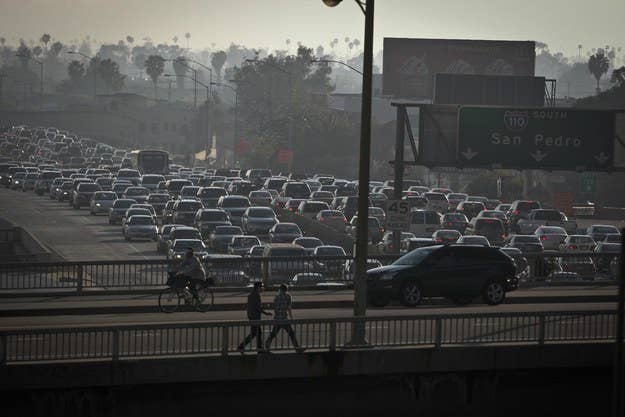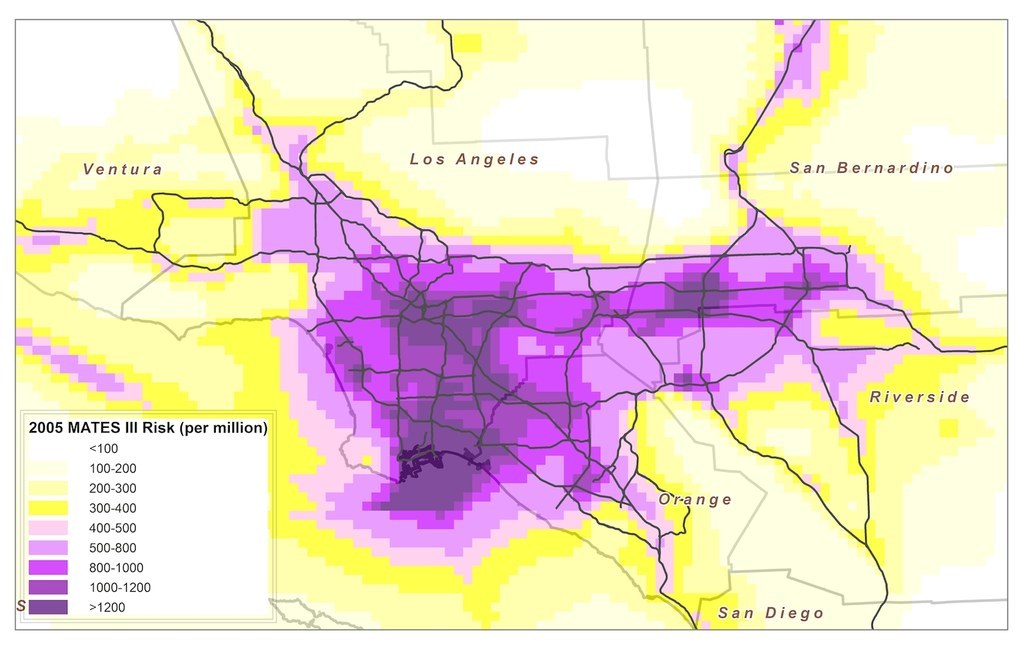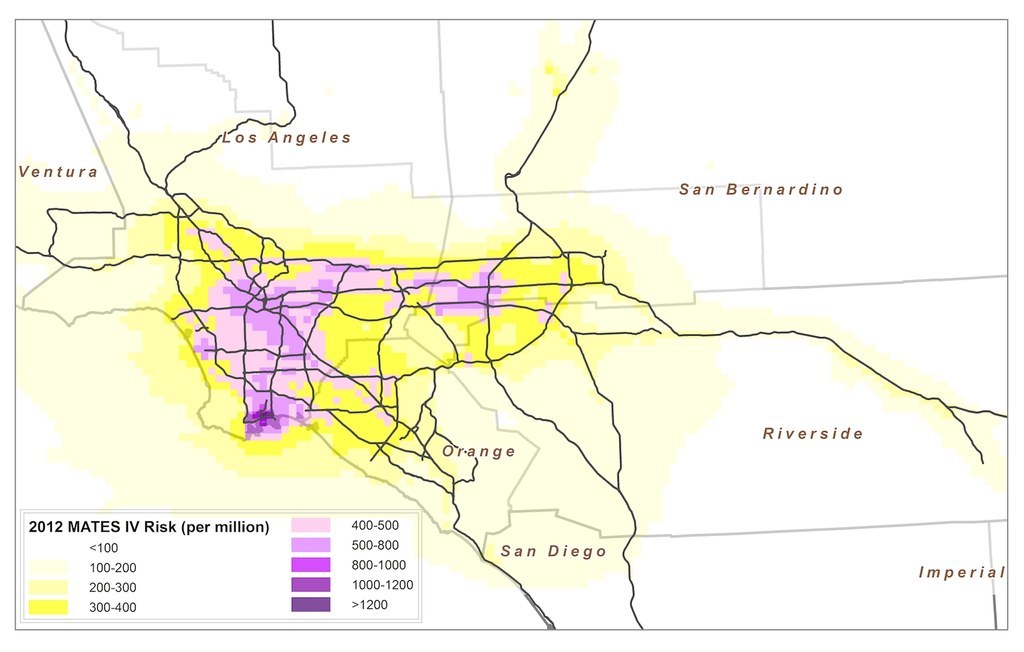The good news is: the air is less toxic

Every seven years, the South Coast Air Quality Management District, which regulates air quality in famously smoggy Southern California, tries to figure out exactly how toxic the stuff we breathe here really is. Today, officials announced that the cancer risk from the air is more than 50% less than it was in 2005.
The bad news is: the cancer risk is higher than previously thought

Officials said they may have been underestimating the cancer risk from the air for years, by a factor of nearly 3. In a press release and a conference call Thursday, officials said that current cancer risk guidelines are expected to be raised by an average factor of 2.7 as soon as early next year.
"During the past decade, scientists have found that children's sensitivity to air toxics has been underestimated," the air district wrote in a release.
Despite that unsettling news, Barry Wallerstein, the executive officer of the South Coast Air Quality Management District, said the reductions in toxic emissions announced Thursday are "one of the regions greatest achievements in pollution control" and "pretty remarkable."
More needs to be done, he added, "to move toward healthful air and adequate protection of our communities."
Maps of cancer risk
These maps show the risk from air pollution depending on where you live in Southern California. The map on top is the risk in 2005; the map on the bottom is current.
The average cancer risk from air pollution across the Southern California region declined from 1,194 in 1 million in 2005 to 418 in 1 million in 2012-2013.
The biggest contributor to the cancer risk was diesel particulate from diesel trucks trains, ships, planes and construction equipment. That was responsible for 68 percent of the total cancer risk.
The ports of Los Angeles and Long Beach — the nation's busiest — were also home to the highest cancer risk, at 1050 in 1 million. Neighborhoods near freeways and other transportation corridors also had very high risks.
The lowest risks were in Central and South Orange County, and southwest Riverside County.


